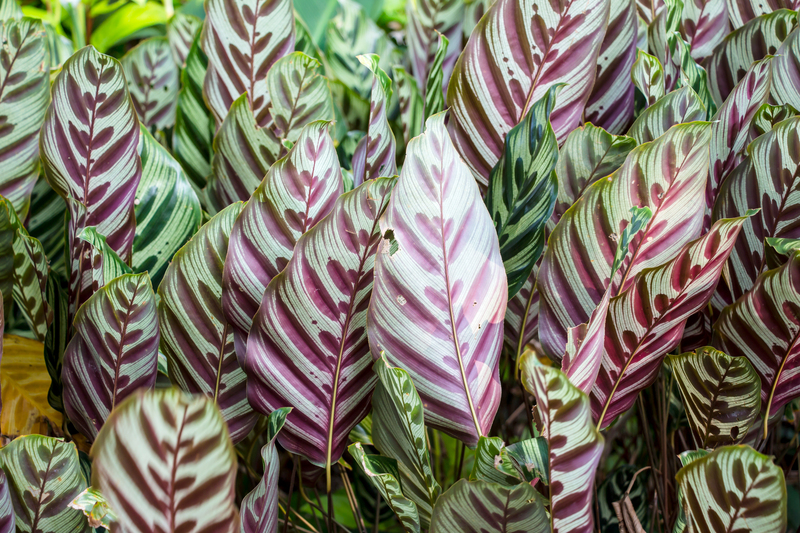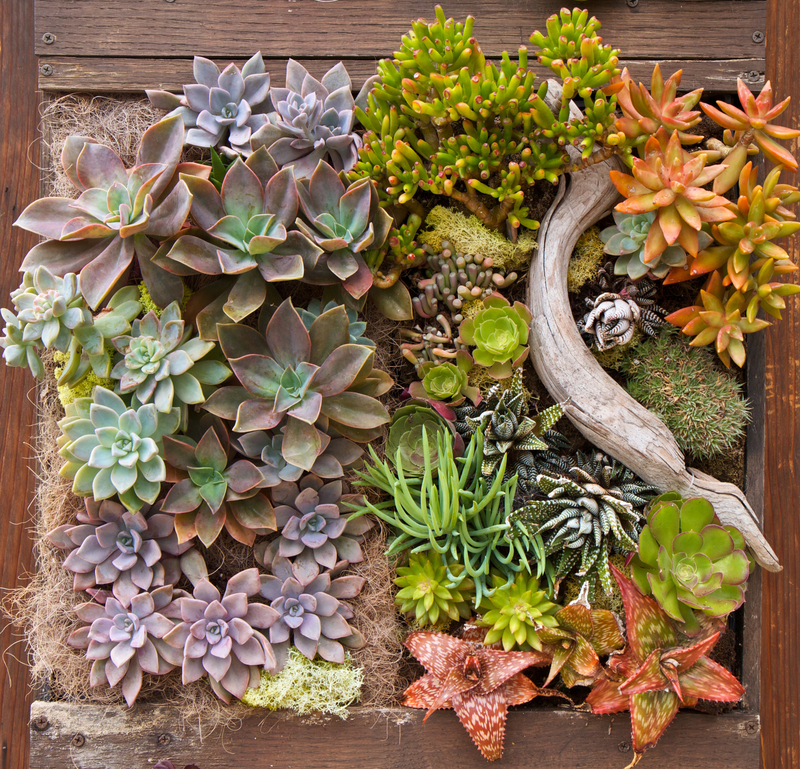Achieve a Low Maintenance Garden on a Shoestring Budget
Posted on 17/08/2025
Achieve a Low Maintenance Garden on a Shoestring Budget
Dreaming of a lush, beautiful garden but worried about the upkeep and expense? Creating a low-maintenance garden on a shoestring budget is not just possible--it's easier than you think! With thoughtful planning, careful plant selection, and clever DIY techniques, you can enjoy a thriving outdoor space without enormous costs or constant work. Here's how to transform your yard into an affordable, easy-care oasis.
Why Choose a Low Maintenance Garden?
Low-maintenance gardening isn't just about saving time--it's about reducing costs, conserving resources, and maximizing enjoyment. Whether your motivation is a busy schedule, limited mobility, or saving money, the benefits are clear:
- Less time spent on chores like weeding, watering, and pruning
- Lower water and utility bills thanks to drought-tolerant choices
- Reduced need for fertilizers and chemicals, making your garden more eco-friendly
- Greater sustainability with plants adapted to your local climate

Planning Your Budget-Friendly Low Maintenance Garden
Start With a Garden Assessment
Before you buy anything, evaluate your space. Observe your yard's sunlight, soil quality, and moisture levels. Identifying these factors will help you select the most suitable plants and materials. Take note of problem spots where plants struggle--these may be better suited for hardscaping or mulch alternatives.
Set Realistic Goals and Prioritize
Ask yourself:
- How much time can I realistically spend maintaining the garden each week?
- What features are most important--flowers, food crops, wildlife habitat, or relaxation space?
- What's my total budget?
With clear priorities, you'll avoid expensive impulse buys and focus on changes that make the biggest difference.
Choose the Right Plants for a Low Maintenance Landscape
Favor Native and Drought-Tolerant Plants
Low upkeep gardens depend on selecting hardy, well-adapted species. Native plants require less water, resist local pests, and establish quickly. Some favorites include:
- Lavender (great for fragrance and pollinators)
- Black-eyed Susan and coneflower (Echinacea) for vibrant blooms
- California poppy and sedums for dry climates
- Ornamental grasses such as blue fescue or switchgrass
- Agapanthus and daylily for trouble-free color
For shade, consider ferns, hostas, and native groundcovers that suppress weeds and stay healthy with minimal care.
Perennials Over Annuals
While annuals bring bursts of color, they require yearly replanting and consistent care. Focus on reliable perennials to fill your space with long-lasting beauty year after year. Dividing and sharing perennials with friends or neighbors is a smart way to expand your plant collection for free.
Use Groundcovers for Weed Control
Groundcovers like creeping thyme, ajuga, or vinca minor blanket soil, crowd out weeds, and stabilize slopes. They require little trimming and provide year-round interest, making them essential for a low upkeep garden on a budget.
Budget-Friendly Design Ideas for a Low Maintenance Yard
Reduce Lawn Areas
Lawns demand frequent mowing, watering, and fertilizing. Replacing turf with planted beds, gravel, or mulch is both cost-effective and labor-saving. Try to limit grass to areas where it's genuinely needed for recreation or appearance.
Mulch, Mulch, Mulch!
Mulching with wood chips, bark, straw, or even shredded leaves conserves moisture, suppresses weeds, and adds nutrients as it breaks down.
- Source mulch locally--municipal tree services often give wood chips free!
- Apply a thick layer (2-4 inches) and replenish as needed for the best effect
Organic mulches improve the soil over time, reducing ongoing costs and effort.
DIY Hardscaping: Patios, Paths, and Edges
Adding durable surfaces can curb weeds and provide structure without major expense. Get creative:
- Use reclaimed bricks or stones to make rustic paths or patios
- Gravel or crushed rock is affordable and easy to install
- Repurposed materials, like old pavers or broken concrete ("urbanite"), make unique, sustainable edging
Hardscaping reduces the area requiring weeding and watering, supporting your low-maintenance landscape goals.
Frugal Tips to Save on Plant Purchases
Start Plants From Seed
Seeds are dramatically cheaper than mature plants. Sow annual flowers and vegetables directly in beds, or start perennials indoors to transplant once established. Many perennials flower in their first year if started early.
Propagate Your Favorites
Expand your garden for free by dividing existing perennials, rooting cuttings, or layering branches. Many plants, like mint, sedum, and lavender, reproduce easily with simple techniques. Share and trade with friends for a wider variety at no extra cost.
Shop Smart: Plant Sales and Community Swaps
- Nonprofit plant sales (often hosted by local garden clubs or botanical gardens) offer hardy selections at bargain prices.
- Online groups and neighborhood apps frequently organize free or low-cost plant swaps.
- Watch for end-of-season clearance deals at nurseries and hardware stores.
Look for healthy root systems, not just good-looking foliage.
Practical Maintenance Routines on a Shoestring Budget
Water Wisely
Reducing water usage is essential for both the planet and your wallet.
- Water deeply but less often to encourage roots to reach deeper into the soil
- Use soaker hoses or drip irrigation for targeted, efficient watering
- Collect rainwater in barrels or buckets for free irrigation
- Water early in the morning to reduce evaporation
Limit Fertilizer and Chemical Use
Fertilizers and pesticides can get expensive. Build healthy soil instead by:
- Adding homemade compost from kitchen and garden waste
- Top-dressing beds with organic mulch
- Leaving grass clippings on the lawn to decompose and feed the soil
Weed Management Without Chemicals
Control weeds on a budget and without backbreaking labor by:
- Using mulch to block sunlight and smother emerging weeds
- Pulling weeds early, before they set seed
- Planting densely so desired plants shade out weeds naturally
- Spot treating with boiling water or vinegar (for paths and edges, not near sensitive plants)
Creative DIY Projects for a Shoestring Garden
Homemade Planters and Raised Beds
Save big by repurposing materials! Old pallets, tires, buckets, or even dresser drawers can become quirky and effective planters. Raised beds can be built with reclaimed wood or stone, making vegetable gardening easier and tidier.
Compost Bins for Free Fertilizer
No need for expensive tumblers--start a compost pile in a tucked-away corner or use a simple wire enclosure. Composting not only cuts down on kitchen and yard waste but provides nutrient-rich material to boost soil health each year.
Rainwater Harvesting on a Budget
Collecting rainwater is a smart, sustainable way to keep your garden watered for free. Repurpose barrels, large plastic containers, or even old bathtubs as reservoirs--just be sure to cover them to reduce mosquito breeding.
Garden Maintenance Schedule for Effortless Upkeep
- Spring: Mulch beds, divide perennials, and start seeds
- Early summer: Spot weed, top up mulch, water as needed
- Mid-summer: Harvest vegetables and deadhead flowers
- Fall: Add compost, plant bulbs or new perennials, tidy beds
- Winter: Sharpen tools and dream up new projects!
With this simple checklist and smart choices, your easy-care garden on a budget will stay vibrant and manageable year-round.

Frequently Asked Questions: Low Maintenance Gardens on a Budget
Do I have to give up flowers for a low-maintenance, affordable garden?
Absolutely not! By choosing perennial flowers and proven, resilient species--like daylilies, lavender, or coneflowers--you can enjoy color and beauty without ongoing costs or labor.
What if I only have a small space?
Even a mini garden or a set of containers can be low maintenance. Opt for compact shrubs, trailing groundcovers, and drought-tolerant plants in pots. Succulents and herbs do especially well in small, contained spaces with minimal effort.
How do I keep my budget garden looking tidy?
Edge beds with bricks, rocks, or recycled materials for definition. Dense planting, mulching, and regular deadheading keep your space neat and reduce weed problems. A few minutes each week is often all you need after initial planting and setup.
Conclusion: Thrive with an Inexpensive, Low-Maintenance Garden
With smart planning, affordable choices, and a little creativity, anyone can achieve a low maintenance garden on a shoestring budget. The key is to focus on sustainability, embrace simpler solutions, and reuse or recycle materials wherever possible. Your garden can be both easy and inexpensive while still providing endless beauty and enjoyment--proving that you don't need deep pockets to cultivate a thriving, wonderful outdoor retreat!
Ready to start your own hassle-free, budget garden? Grab your gloves, gather your ideas, and begin turning your dream garden into a reality--without breaking the bank or your back!

